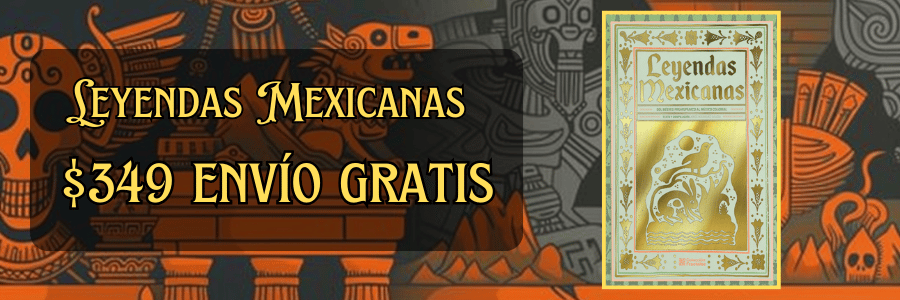The Social Structure of the Maya Civilization
The social structure of the Maya civilization, one of the most significant civilizations in Mesoamerica, was intricate and multifaceted, characterized by a hierarchal organization that dictated almost every aspect of daily life. This ancient civilization, which flourished in what is now southern Mexico, Guatemala, Belize, and parts of Honduras and El Salvador from around 2000 BCE until the Spanish conquest in the 16th century, had a distinctive social order that encompassed various classes and roles. The classes within Maya society were generally categorized as the elite, the commoners, and the slaves, with each class playing critical roles within the overall functioning of the civilization.
At the apex of the social structure of the Maya civilization were the elite, also known as the nobility. This group was composed of high-ranking kings and queens, priests, warriors, and scribes. The ruling class was often seen as semi-divine, with rulers believed to be divinely chosen or descended from various gods. They held immense power, both politically and religiously, and were responsible for maintaining the favor of the gods to ensure agricultural success and the well-being of their people. The elite lived in palatial compounds that were physically distinct from the rest of society, highlighting their elevated status. These structures were not only practical but were also magnificent, adorned with elaborate carvings and murals that celebrated their power and religious significance.
Priests, centered within this elite category, held substantial authority in the Maya civilization. They were responsible for conducting rituals, ceremonies, and sacrifices that were integral to Maya belief systems. Their prominence derived not only from their religious duties but also from their proficiency with the complex Maya calendar and their knowledge of astrology, which lent them an air of mystique and authority. The priestly class operated away from the commoners, conducting rites in temples where kings often took on priestly roles during significant ceremonies, thereby blending the political and spiritual realms of leadership.
Warriors were another essential segment of the elite class. Warrior status was both a social rank and a crucial role in the Maya civilization, as military might was necessary for the protection of city-states and expansion. Their status was elevated, and their roles were celebrated, with warriors often receiving rewards for their bravery and contributions to conquests. They would capture enemies, and in some cases, these captives were used for sacrificial rituals, which played an essential part in the Maya cosmology. The achievements of these warriors were often depicted in glyphs and murals, showcasing their importance within the hierarchal structure.
Following the noble class were the commoners, who comprised the largest segment of the population in Maya society. This group was primarily composed of farmers, artisans, laborers, and traders. Agriculture was the backbone of the Maya economy, and most commoners were engaged in farming, growing staple crops such as maize, beans, and squash, which were fundamental to their diet and trade. The majority of these farmers operated small family plots, but some commoners worked on larger estates owned by the elite, which required them to pay tribute in the form of labor and agricultural produce. Despite the lack of political power, commoners played a vital role in sustaining the economy and, by extension, the elite.
Artisans and traders also filled significant niches within common society. Artisans were specialized craftsmen who produced pottery, weaving, carving, and other handmade goods. Their work held esthetical, spiritual, and economic value and was vital for both local consumption and trade with neighboring regions. Trade in the Maya civilization extended beyond mere goods, facilitating the exchange of ideas, cultural items, and technology. Traders traversed various regions, establishing connections between city-states and engaging in long-distance trade that included jade, cacao, textiles, and obsidian.
A critical aspect of Maya social structure was the notion of social mobility, albeit to a limited extent. Though the social hierarchy was rigid, there were instances where individuals from lower classes could ascend due to notable achievements, such as demonstrating skills in warfare or excelling as artisans. Political alliances through marriage also provided avenues for climbing the social ladder. Although rare, this potential for mobility illustrates the dynamics of social class within the Maya civilization. However, this flexibility was predominantly the exception to the norm, as the larger social system maintained its hierarchical features.
At the lower end of the social hierarchy were the enslaved individuals. Slavery in the Maya civilization was not based on race, but rather it was often a result of warfare, economic hardship, or punishment for various crimes. Captured enemies in conflict could be forced into servitude, with some individuals becoming slaves as a means of settling debts or due to punitive measures. The daily life of slaves varied based on their status; those who were household slaves could potentially blend into family life, subject to a different experience than those laboring in the fields or under harsh conditions in larger estates.
The role of women within the Maya social structure is also a complex subject. While the deeply patriarchal nature of Maya society often relegated women to subordinate positions, they did possess important roles, particularly in the domestic sphere. Women were primarily responsible for managing households, which included farming, food preparation, and childcare. They also played crucial roles in weaving and pottery, producing goods that were necessary for both everyday life and trade. Some women of the elite class, although fewer in number, wielded substantial power, acting as regents or meaningful political figures during periods of dynastic disruptions or when male heirs were unavailable.
Religion, as intertwined with Maya culture, further influenced the social structure. The pantheon of deities in Maya cosmology not only dictated the livelihoods of the elite and commoners but also shaped the moral and ethical responsibilities across classes. Religious rituals were essential to the governance of the daily lives of the Maya people, with heavy emphasis on maintaining harmony and balance with the gods. The influence of religious belief traversed all levels, often serving to justify the power of the elite while simultaneously solidifying the status quo of the lower classes.
Art and architecture in the Maya civilization also played a crucial role in delineating the social structure. The grand temples, pyramids, and palaces were not merely functional but served as monumental representations of the power and societal organization inherent in Maya civilization. The art depicted both societal hierarchy and the cosmological beliefs, with elaborate carvings embodying the accomplishments of the elite. The artistic achievements reflected the wealth and resources of the elite class, while also reinforcing their status through visual narrative.
Language and literacy within the Maya civilization were primarily confined to the elite. The ability to read and write hieroglyphs was limited to an educated aristocracy, including the priests and scribes. These literate individuals recorded historical events, genealogies, religious texts, and economic activities, reinforcing the collective identity of the elite class. The literate elite were the custodians of history and religion, ensuring continuity and control over the narrative of their civilization.
Despite the rigid hierarchical framework, the passing of centuries saw changes in the social structure. The rise and fall of city-states shaped the dynamics of class and influenced power distributions among elites and commoners alike. During times of turmoil, such as periods of drought or warfare, commoners' grievances could lead to shifts in power, indicating an ever-evolving landscape of social structure that responded to environmental and political changes. The eventual decline of classic Maya civilization around the 9th century and the subsequent transformations hinted at a reorganization of societal frameworks that would pivot towards new power structures in the aftermath.
In conclusion, the social structure of the Maya civilization reflected a complex web of interactions between the elite, commoners, and slaves, characterized by rigid hierarchies influenced by religion, politics, and economy. Understanding this structure offers valuable insights into the dynamics of power and daily life in one of the most advanced and intricate civilizations of the ancient world. The legacy of the Maya civilization is not only encapsulated in its monumental architecture and stunning art but also in its underlying social systems that governed human relationships and societal organization over millennia.
Explore More:
| How the Mexican Revolution Changed the Role of the Catholic Church |
| Education and Schools in Colonial Mexico |
| Women’s Rights in Mexico: Progress and Struggles After the Revolution |
| How the French Invasion of Mexico Impacted the Mexican Monarchy |
| The Artistic Legacy of Mexico’s Colonial Period: From Paintings to Sculpture |
| The Role of Oil in the Development of Alternative Fuels |
| How Mexican Artists Are Reimagining Their Cultural Roots |
| The Artistic Expression of Mexico’s Indigenous Communities |
| The Role of the Chichimeca in the Silver Mining Boom of Zacatecas |
| The Diplomacy of the French Intervention: Letters and Treaties |



